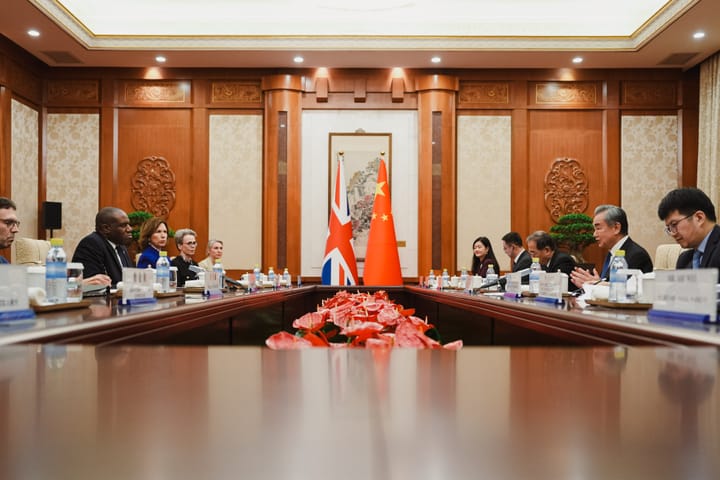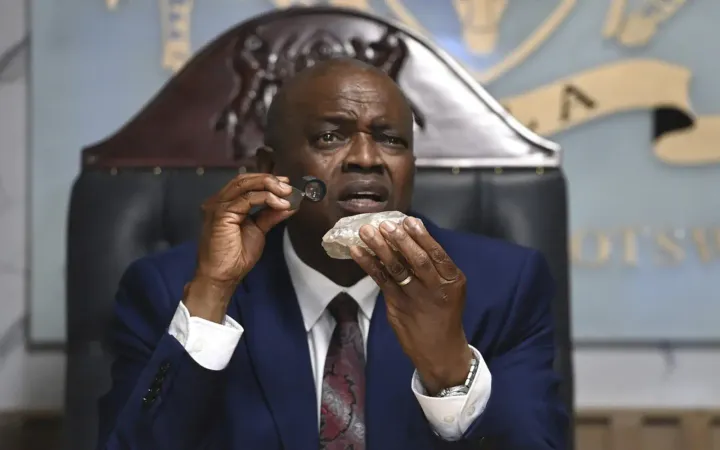Panda Diplomacy Revived

Pandas arrive at San Diego Zoo, herald new era of Sino-American cultural relations
In early August, the San Diego Zoo celebrated the opening of a new exhibit for the newest pair of pandas loaned to the United States, Yun Chuan and Xin Bao. For more than 40 years, China has loaned pandas, animals as important to Chinese culture as the bald eagle is to American culture, to U.S. zoos.
“Many people don’t realize it, but there are actually two Chinese ambassadors in Washington: me and the panda cub at the National Zoo.”
At the San Diego panda exhibit’s opening ceremony, Chinese Ambassador Xie Feng acknowledged the significance of 45 years of formal diplomatic relations between China and the United States, stating that the anniversary’s coincidence with the arrival of the pandas sends a message: “China-U.S. cooperation on panda conservation will not cease, our people-to-people exchanges and subnational cooperation will not stop, and, once opened, the door of China-U.S. friendship will not be shut again.” In the past few decades of increasingly tense U.S.-China relations, the question has been whether that door has started to slowly creak shut. When China sent a panda cub to Washington D.C.’s National Zoo in 2013, China’s then-ambassador to the United States, Cui Tiankai, published an opinion piece for the Washington Post in which he acknowledged panda diplomacy: “Many people don’t realize it, but there are actually two Chinese ambassadors in Washington: me and the panda cub at the National Zoo.” As unofficial cultural ambassadors, diplomatic efforts involving pandas can provide important insight on the future of the China-U.S. friendship.
For the past few years, there had been speculation that China would not be extending any of the several leases of pandas it has on loan to U.S. zoos due to three ongoing areas of contention between the two countries: trade relations, technological competition and dispute over Taiwan. This seemed to be the case when in 2019, China did not extend the United States’ loans of pandas at San Diego Zoo and Memphis Zoo. In October 2023, the National Zoo in Washington, D.C. returned their three pandas as well.
China’s recent renewal of the U.S. panda loans breaks the trend of how China has conducted panda diplomacy with various governments over the past few decades, and signals China’s softening attitude towards America.
China’s practice of loaning pandas to other countries has consistently reflected its political interests since the inception of the People’s Republic of China in 1912. In the 1950s, it gifted pandas to North Korea and the Soviet Union. Not only does China use panda loans to strategically build diplomatic ties with other countries, once the pandas arrive in a country, they can often generate soft power for China by serving as symbols of Chinese culture. By accepting pandas in their zoos, governments publicly show goodwill toward the Chinese government, and the popularity of the panda exhibits subtly improves public opinion of China.
A 2013 Oxford University study on panda diplomacy proposes that it has historically been utilized by China during three different phases. During the first phase between 1957 and 1983, a key period of the Cold War, China used pandas to “build strategic friendships.” It had gifted pandas to the USSR and the United States, countries which China perceived as its “militant revolutionary rival” and its “major ideological adversary” respectively, in an attempt to create a triangular power balance and prevent conflict between the three world powers.
The PRC first gifted a pair of pandas to the U.S. in April 1972, shortly after President Richard Nixon’s landmark trip to China marked the beginning of modern U.S.-China ties after twenty-five years of no contact. The visit heralded an era of detente, where after a week of meetings between the two governments and tours around major Chinese cities for the U.S. government officials, Chinese Premier Zhou Enlai offered to send two pandas to the U.S. as a gift. President Nixon reciprocated by gifting China two musk oxen. A couple years later in 1979, the two countries officially established diplomatic relations. From then until 2023, there had always been at least one pair of pandas in an American zoo.
In the 1980s, Deng Xiaoping became chairman of the Chinese Communist Party and enacted market reforms that began the rapid economic growth of China. In this spirit of being more open to Western investment, China switched from gifting pandas to loaning them to other countries instead, usually for ten years at a time with a loan fee of about $1 million per year and the requirement that China retain ownership of any cubs born during the lease term. However, China’s selection of countries that could accept panda loans became no less deliberate; on the contrary, China began to use pandas to strategically reinforce bilateral relations and reward support from other countries, especially support for the One-China policy. In the 2010s, countries like Austria and Finland received panda loans after publicly recognizing China’s One-China Policy, while China canceled the delivery of a panda to the Prague Zoo after Czech government officials met with Tibet’s exiled government in March of 2023.
The arrival of this newest panda pair in the U.S. seems almost anachronistic, defying the past decade of increasingly tense Sino-American relations as the two governments continue to face off on trade, technology, and geopolitics. Since the 2010s, when the United States’ trade deficit with China reached $295.5 billion — making the U.S.’s the highest trade deficit of any country in the world and more than double the next highest trade deficit — the U.S. has enacted various restrictions — and tariffs worth more than $50 billion — on Chinese exports and companies in the U.S. in an ongoing effort to reduce American investments in China and reliance on Chinese trade. Throughout the 21st century, the U.S. has sparked disapproval from China for granting shelter to Chinese dissidents and for being in contact with governments exiled and not recognized by China, such as the governments of Tibet and Taiwan, despite the United States’ continued affirmation of the One-China policy. And just last year, President Joe Biden ordered a ban of U.S. investments in three sectors of China’s technology industry.
As relations between China and the U.S. continue to grow more unstable over economic and geopolitical issues, the arrival of the pandas at San Diego Zoo signals renewed efforts in cultural diplomacy between the two countries and, potentially, China’s strengthened interest towards more amicable overall relations with the United States. At a time rife with political polarization and various mainstream cultures’ embrace of overgeneralized cultural stereotypes, it is more important than ever that cultural diplomacy efforts continue — even in spite of countries’ differing political interests. As Sino-American relations experts point out the makings of a second Cold War, cultural diplomacy must be recognized and strengthened in order to avoid a second Cultural Cold War.



